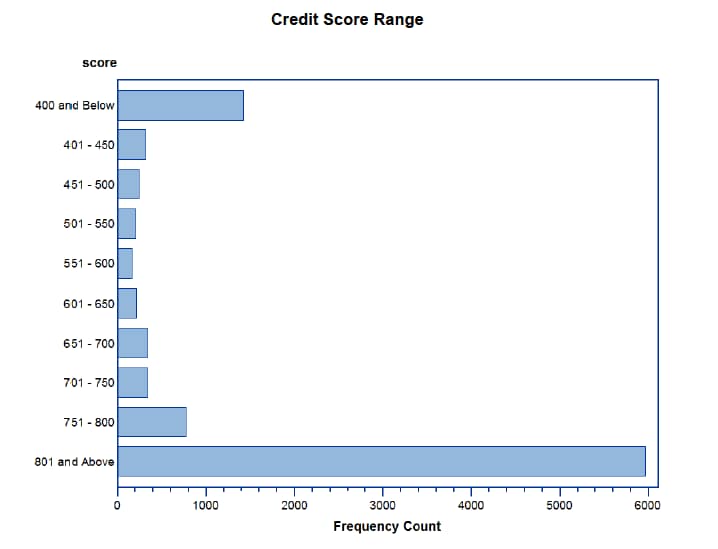User-Defined Reports
Overview of User-Defined Reports
Create a User-Defined Report
-
To format the output for a user-defined report, add the SAS code below to your report code in order to use the Select Formats list box and the Style list box in the New Report window. The Select Formats list box enables you to select a report output format of HTML, PDF, RTF, or Excel. The Style list box enables you to select a report output style for your report.Replace report-name with the name of your user-defined report. End your user-defined report with the %MM_ExportReportsEnd macro.
Filename mmreport catalog "sashelp.modelmgr.reportexportmacros.source"; %include mmreport; %MM_ExportReportsBegin(fileName=report-name); … your-user—defined-code … %MM_ExportReportsEnd;
-
In the report XML file, add this SAS program name to the FILENAME= argument of the <Code> element (for example,
<Code filename="myUserReport.sas"/>). See The Report Template.
For an example of a
report, see Example User-Defined Report.
Defining SAS Model Manager Macro Variables for a User-Defined Report
Executing a user-defined
report requires a SAS program that lists the report code’s
SAS Model Manager macro variables. If you do not have SAS Model Manager
macro variables in your report, create a SAS program file with a comment
in it. This file is required.
In the report XML file,
add this SAS program name to the FILENAME= argument of the <PreCode>
element (for example,
<PreCode filename="myMacroDefs.sas"/>). See The Report Template.For an example of a
SAS Model Manager macro variable program, see Example User-Defined Report.
For a list of SAS Model
Manager macro variables, see SAS Model Manager Macro Variables.
Upload SAS Programs to the SAS Content Server
The Report Template
You create a report
template XML definition file to describe your user-defined report.
After you create the report template, upload the template to the SAS
Content Server.
SAS Model Manager provides
a sample report template that you can use as a model for your XML
template. You can use any template as a model or you can create an
XML file with the required XML elements. A best practice is to open
the model XML template and save the template using another name. To
open a sample report template, follow these steps:
<?xml version="1.0" encoding="UTF-8" ?> <ReportTemplate name="report-name" type="UserDefinedReport" displayName="display-name" description="model-description" > <Report> <Data datasetName="input-data-set-name"/> <Models expectedModelType="model-type" requiredNumberOfModels="1" level="level"> </Models> <SourceCode> <PreCode filename="pre-code-filename.sas"/> <Code filename="score-code-filename.sas"/> </SourceCode> <Output format="output-format" filename="output-name"/> </Report> <Parameters> <Parameter name="parameter-name" value="parameter-value" /> </Parameters> </ReportTemplate>
<ReportTemplate>
element arguments
<Report> element
arguments
<Data datasetName="input-data-set-name"/>
specifies the name
of a data source data set that is used for input to the report. The
data set must be in the form libref.filename.
You can use the following global macro variables as a value for input-data-set-name
as long as the value of the macro variable is in the form of libref.filename:
<Models
expectedModelType="model-type"
requiredNumberOfModels="number-of-models"
level="level">
</Models>
Delete a SAS Program from the SAS Content Server
Example User-Defined Report
Overview of the Example User-Defined Report
The SAS Report Program
filename mmreport catalog "sashelp.modelmgr.reportexportmacros.source";
%include mmreport;
%MM_ExportReportsBegin(fileName=scoreRange);
options NOmprint NOdate;
%let _MM_PosteriorVar=P_1;
proc format;
value score
low - 400 = '400 and Below'
401 - 450 = '401 - 450'
451 - 500 = '451 - 500'
501 - 550 = '501 - 550'
551 - 600 = '551 - 600'
601 - 650 = '601 - 650'
651 - 700 = '651 - 700'
701 - 750 = '701 - 750'
751 - 800 = '751 - 800'
801 - high= '801 and Above';
run;
quit;
%Macro scoreRange();
%if &_MM_ScoreCodeType = %str(SAS Program) %then
%do;
%let _MM_OutputDS=work.scoreresult;
%inc &_MM_Score;
%end;
%else
%do;
data work.scoreresult;
set &_MM_InputDS;
%inc &_MM_Score;
run;
%end;
data work.scoreresult2;
set work.scoreresult;
keep score;
if &_MM_PosteriorVar =. then delete;
score = int (((1-&_MM_PosteriorVar) * 480) + 350 + 0.5);
run;
proc freq data=work.scoreresult2;
table score/out=scoresummary;
format score score.;
title 'Credit Score Range';
quit;
proc gchart data=work.scoresummary;
hbar score / sumvar=count discrete;
title 'Credit Score Range';
run;
quit;
%Mend scoreRange;
/* Reporting section */
ods listing close;
%getModelInfo(0);
%scoreRange();
%closeLibsAndFiles();
%MM_ExportReportsEnd;The Report Template XML File
<?xml version="1.0" encoding="UTF-8" ?>
<ReportTemplate
name="Score Range Report"
type="UserDefinedReport"
displayName="Score Range Report"
description="Score Range Report"
>
<Report>
<Data datasetName=""/>
<Models expectedModelType="ANALYTICAL"
requiredNumberOfModels="1" level="VERSION">
</Models>
<SourceCode>
<PreCode filename="ScoreRangeMacro.sas"/>
<Code filename="ScoreRange.sas"/>
</SourceCode>
<Output format="PDF" filename="ScoreRange"/>
</Report>
<Parameters>
</Parameters>
</ReportTemplate>
